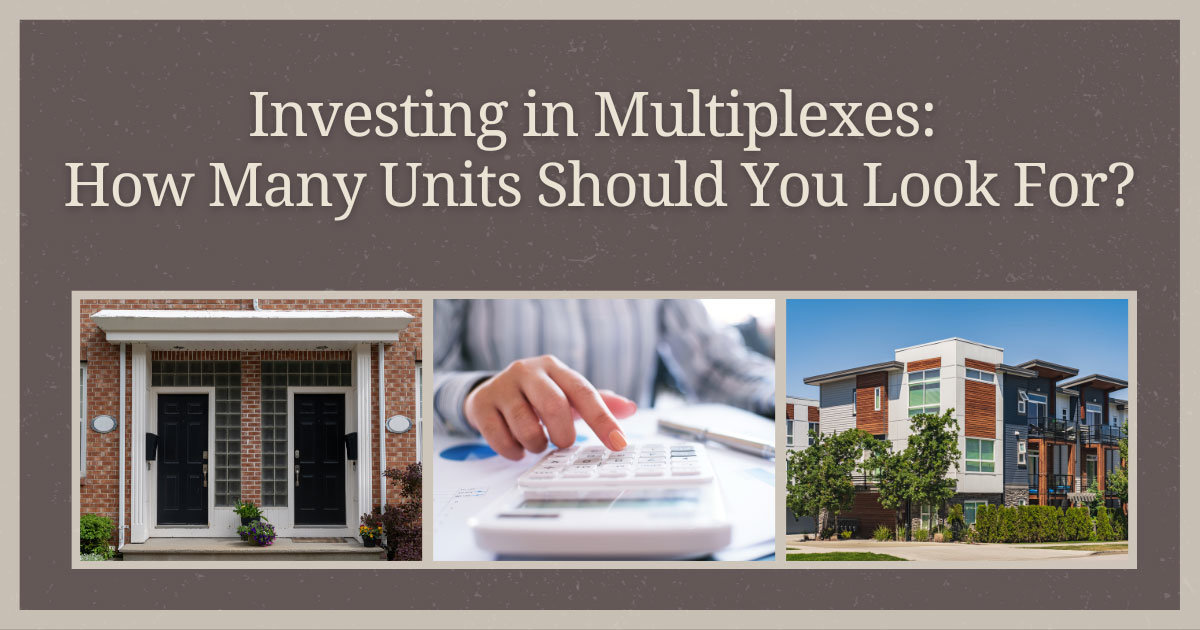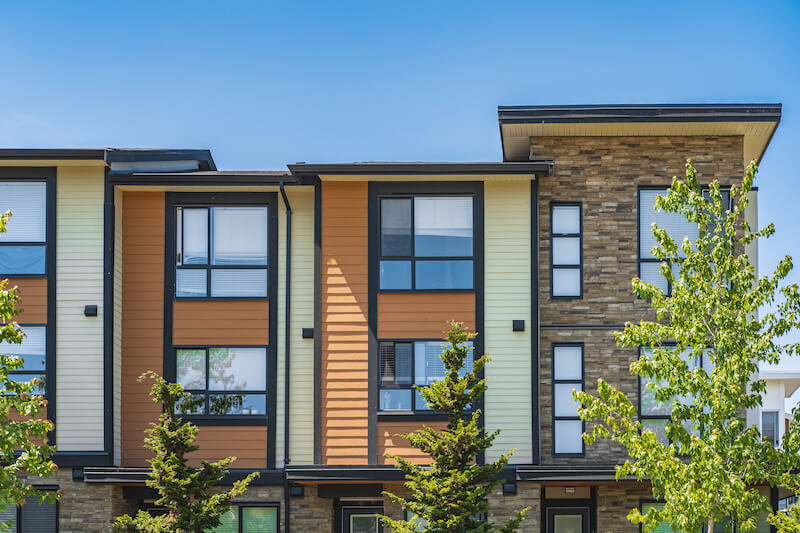Investing in Multiplexes: How Many Units Should You Look For?
Posted by Edmonton Homes.ca on Wednesday, October 11th, 2023 at 8:44am.

Are you ready to dive into the world of real estate investing? Choosing between multi-family rental home sizes is like embarking on a culinary adventure—you have an array of options, and the size of your multi-family property will offer distinct advantages and challenges. The number of units directly impacts your potential rental income, but it also impacts your costs, your ability to get loans, and the amount of effort you’ll be committing to the endeavour.
Whether you’re looking into “house hacking” by turning your single-family home into a duplex or maximize profit with a larger multiplex, there are several things you should consider about how the size of your multi-family unit will affect your investment.
Duplexes, Triplexes & Quadplexes
When choosing between duplexes, triplexes, and quadplexes for multi-family rental homes, there are several points to consider.
These smaller units often require lower down payments and can qualify for lower mortgage rates when compared to larger multi-family properties. Additionally, they are generally easier to manage independently, as there are fewer units and tenants to oversee. Lastly, the overhead costs, such as landlord insurance and maintenance, tend to be less for these smaller multi-family properties.
Lower Down Payments & Mortgage Rates
The down payment and mortgage rate can make a significant difference when financing multi-family homes with four or fewer units. It’s logical that smaller units are more affordable, and thus the down payment is smaller—however, that’s not the only factor at play. When you buy a multiplex with five or more units, lenders consider it a commercial property, for which you will need to qualify for a commercial real estate mortgage.
This type of mortgage comes with additional criteria barriers, including the building’s profit potential and your experience as a landlord. Approval is quite a bit more challenging, and the down payments tend to be a higher percentage of the building’s value.
With lower barriers to entry and more affordable financing options, duplexes, triplexes, and quadplexes are attractive choices for those looking to invest in multi-family real estate, particularly those just starting out.
Easier to Manage Independently
Managing a small multi-family property on your own can be a breeze with the right tools and resources.
As an independent landlord, you have the advantage of controlling all aspects of property management. With the help of online tools, you can streamline tenant communications, handle maintenance requests efficiently, and collect rent seamlessly. These tools can also assist with document management and keep track of important lease information.
By managing the property independently, you have direct contact with your tenants and can address any concerns or issues promptly. Additionally, you have the flexibility to set your own rules and regulations for your properties.
All of this is easier when you’re dealing with just a few tenants or families. You can more easily build a rapport, which can, in turn, make the tenant-landlord relationship run more smoothly.
However, it's important to note that managing a multi-family property, even with just a few or even just one tenant, requires time and effort. You must be knowledgeable about local laws and regulations regarding landlord responsibilities and ensure that you stay organized to handle your duties effectively.
Less Overhead Cost
Operating expenses for commercial rental properties typically include the following:
- Property taxes
- Landlord insurance premiums (more expensive than homeowners insurance)
- Utility costs
- Maintenance and repair costs
- Snow removal
- Cleaning services between tenants
- Pest control
- Advertising
If you’re employing a property management company, you’ll have to add on their fees, too. Additional help like accounting services is also an expense you should budget for.
A smaller building means smaller costs, and with fewer tenants creating fewer potential emergencies—clogged toilets, broken appliances, and the like—handy landlords may be able to avoid having to call in professional services for emergency fixes.
However, there is one catch you may not expect: who you’re renting to may also affect your offered insurance rates. Renting to multiple unrelated tenants in a single unit may cause your classification in the eyes of lenders to jump to “commercial” despite having four or fewer rental units.
How to Buy an Investment Property With More Than Five Units

If you're considering buying an investment property with more than five units, there are a few key points to keep in mind.
First, you'll need to determine how much of a down payment you'll need to make. This will depend on factors such as your credit score, the type of financing you choose, and the lender's requirements.
Additionally, it's crucial to calculate the property's profitability by considering factors such as rental income potential, operating expenses, and potential appreciation over time.
How Much is a Down Payment for a Multi-Family Home?
Estimating the down payment for a multi-family property is crucial when considering different rental home sizes. The down payment for a commercial rental property is typically at least 25% if your rental is owner-occupied, and a minimum of 30% if you’re not in residence.
However, you may be able to lower your down payment by mitigating the risks to the lenders. A proven track record for operating a similarly-sized building, five or more years of experience from you or your property management company, and having significant financial assets to back up your business venture can all get you better rates. With mortgage insurance, your down payment may be as low as 15%.
On the other hand, riskier investments, like pre-development condos and farmland, can see your down payment requirement rise to 45% or more.
Keep in mind that some lenders might have specific requirements based on your credit score and debt-to-income ratio. It's important to shop around and compare different financing options to find the best terms and rates that suit your investment goals and financial capabilities.
Calculate Profitability
Calculating profitability for a multi-family property involves determining the net operating income (NOI) by subtracting expenses from rental income.
To calculate the NOI, you need to gather information about the property's rental income and various expenses such as maintenance, insurance, property taxes, and management fees. Subtracting these expenses from the total rental income will give you the NOI.
Once you have calculated the NOI, you can use it to determine the property's cash flow and cap rate. You can calculate cash flow by subtracting the monthly mortgage payment from the NOI, while the cap rate (NOI divided by the property’s market value) indicates the return on investment and estimated risk.
It's important to note that a cap rate typically falls within the range of 3–10%. Higher cap rates are not necessarily better, as these tend to be more volatile investments, while low cap rates tend to be more stable for long-term cash flow.
Carefully Assess Your Investment Goals
When deciding between multi-family rental home sizes, it's crucial to carefully assess your experience, investment goals, and market conditions.
Consider the advantages and disadvantages of each type of multiplex in terms of potential income, financing options, and management requirements. Remember that location is key to the success of your investment.
By taking these factors into account and making an informed decision, you can set yourself up for success in the world of multi-family real estate investing.

